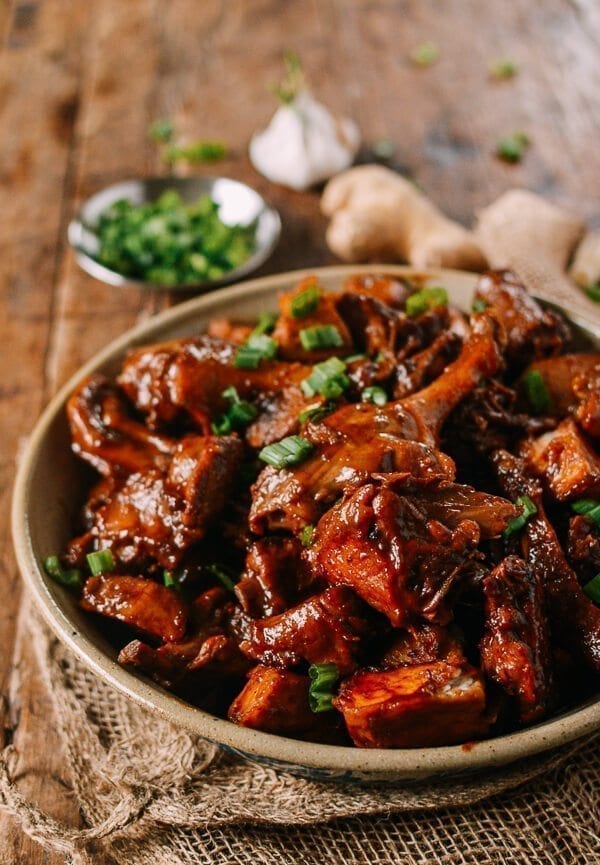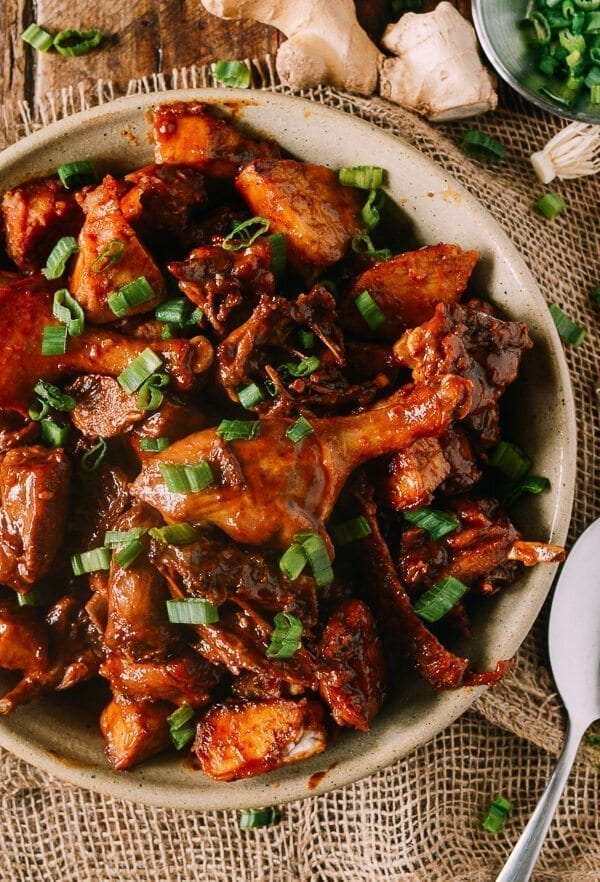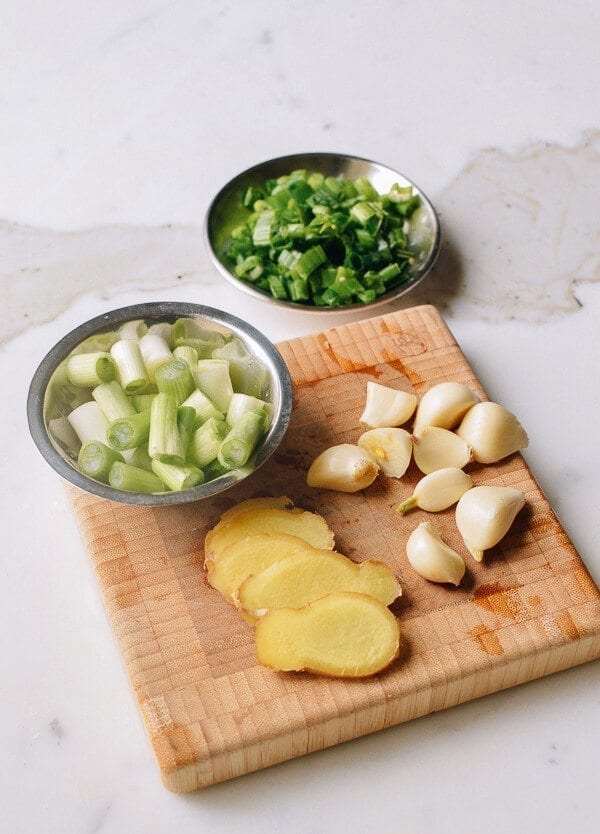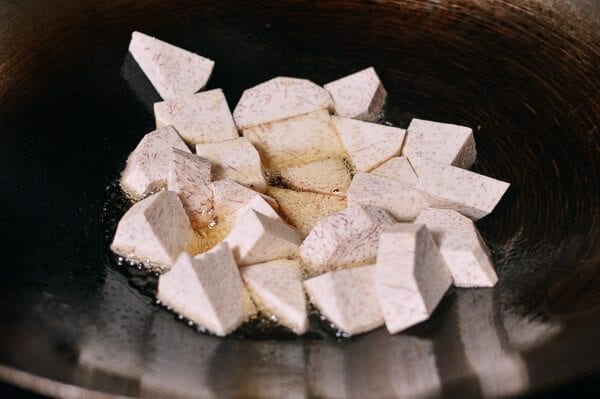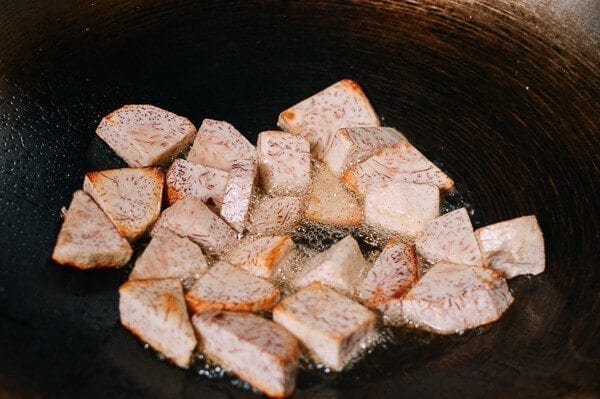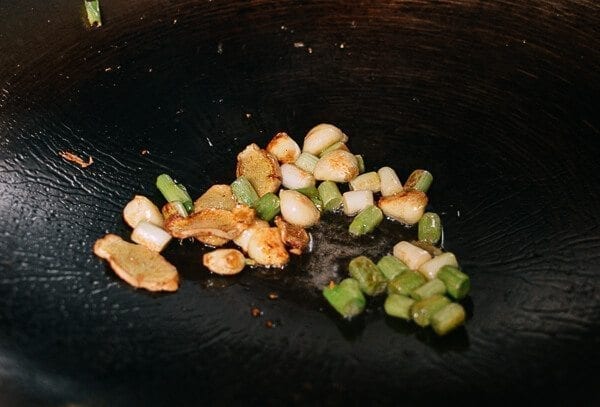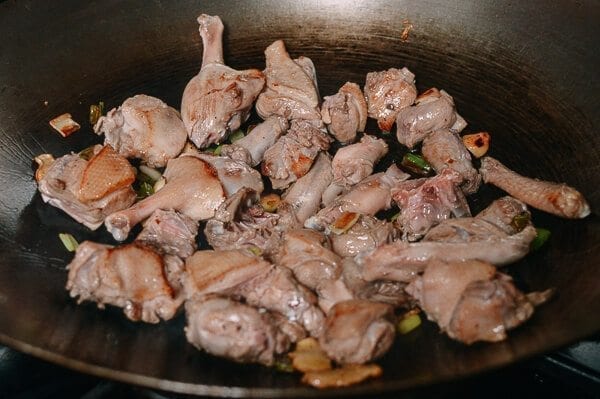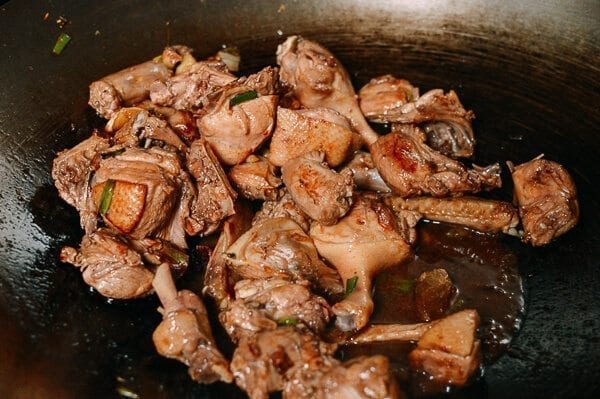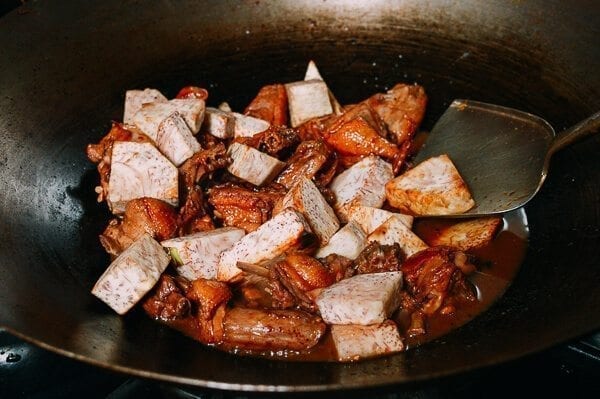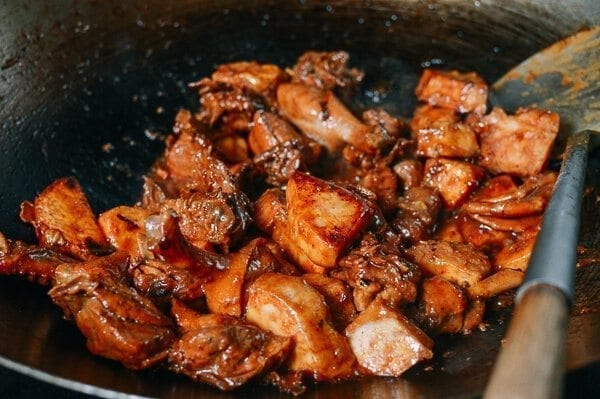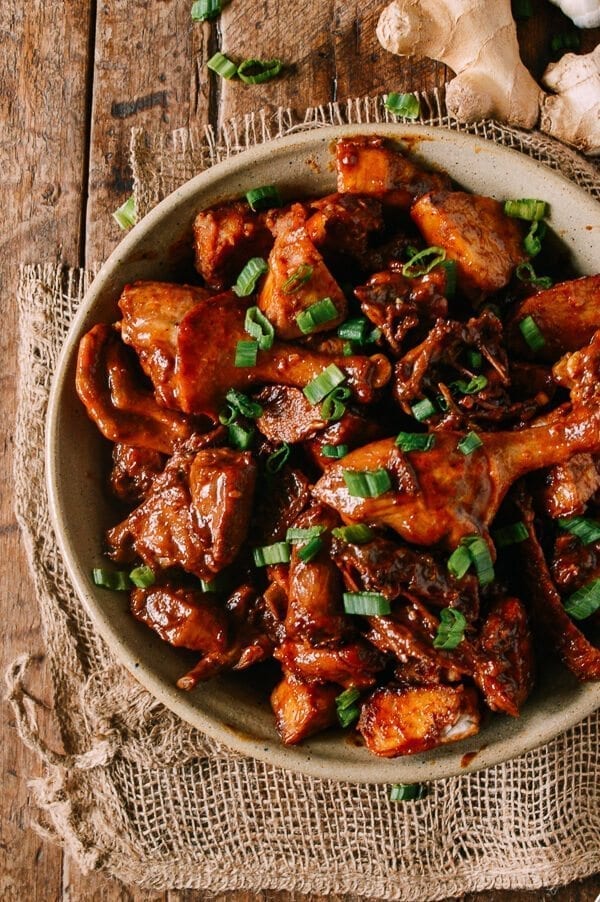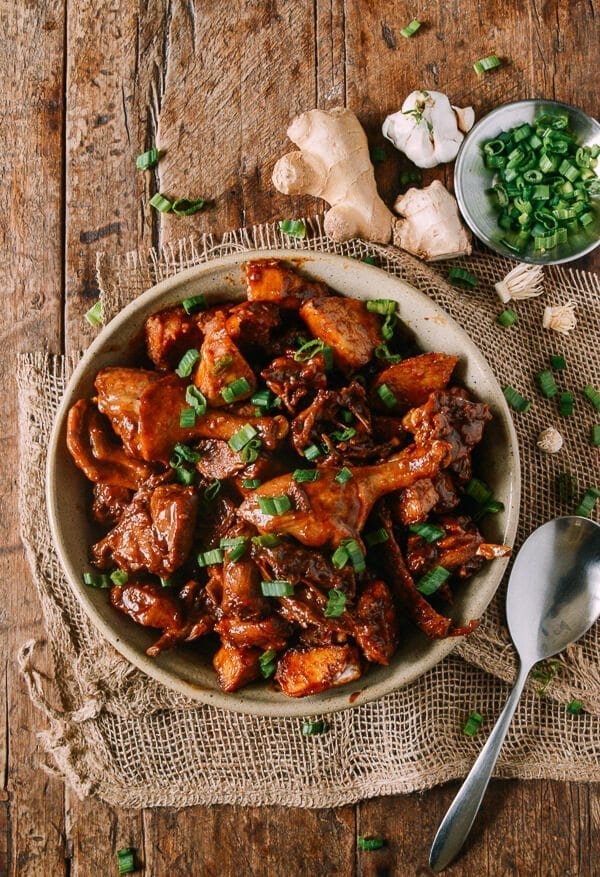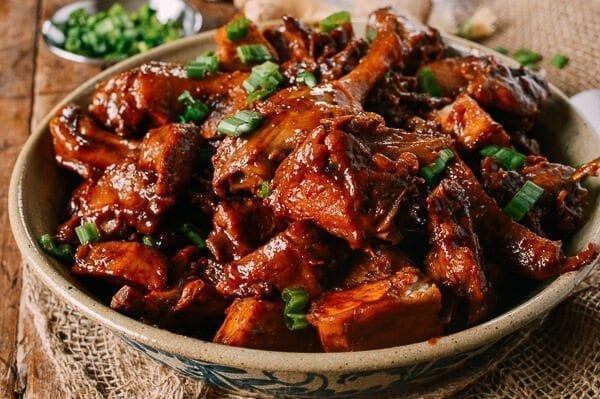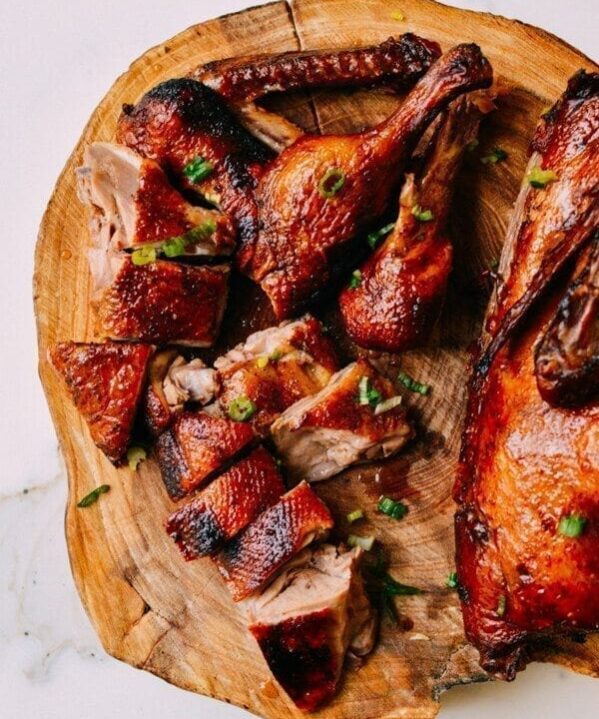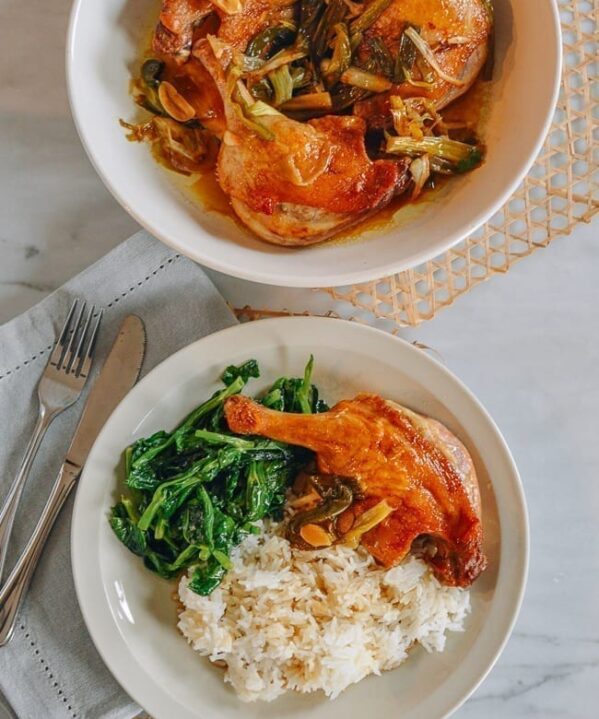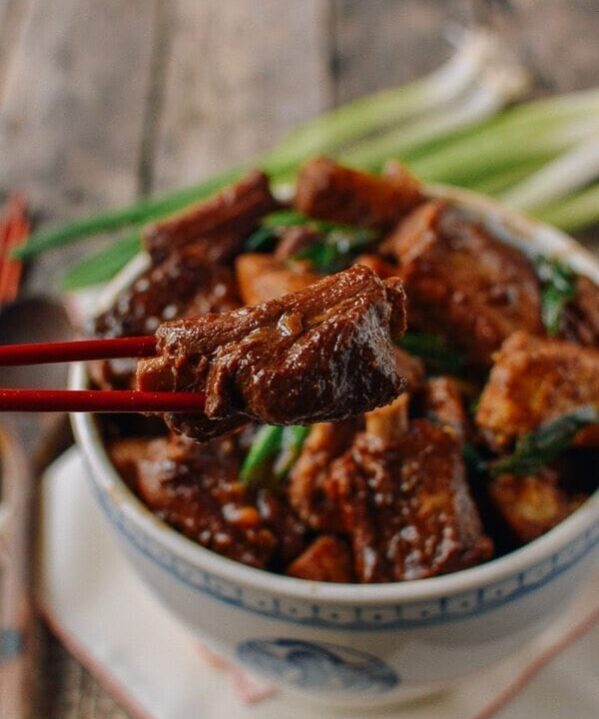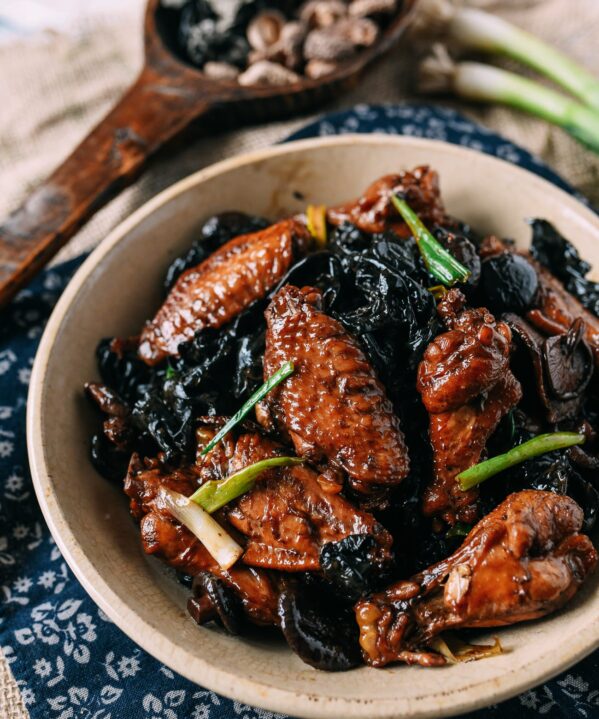Do you ever wish that restaurants could be a little more creative with their menus? Why do all Cantonese restaurants serve the same dishes? Why do all Shanghainese and Sichuan restaurants do the same? The problem often applies to Japanese, Vietnamese, Indian, Greek, and Italian restaurants as well.
When I go out to eat, I’m looking for something different. Even just a new ingredient would make my dining experience a lot more exciting. Because as we all know, every cuisine can offer a lot more than the standard restaurant menu, including the tasty dishes, like this braised duck, that one’s grandparents or parents made that can make us miss home.
I first had this Braised Duck with Taro when Bill’s father made it many years ago. Like many of our other traditional dishes, you can’t find it in restaurants. I guess that’s where we (The Woks of Life) step in to help fill the void!
Recipe Notes
Before we start, please check out our Chinese Ingredients Page regarding taro, as there is a big difference between the small and large taro varieties. This Braised Duck with Taro dish requires large taro. If you can’t find taro, try the recipe with russet potatoes. Heck, if you don’t want to deal with duck because it’s more expensive or unavailable where you are, use chicken!
A few more things to note:
- We will be shallow frying the taro so it doesn’t fall apart easily when braising.
- It’s hard to believe, but taro cooks very quickly, so make sure they don’t go mushy!
- It’s best to get rid of the ducktail before cooking the duck.
- Another common ingredient for this dish is fermented red bean curd sauce (腐乳汁). When used in moderation, it really adds a lot to the dish. If you want to give it a try, I recommend that you replace 2 tablespoons of the light soy sauce with 2 tablespoon of red fermented bean curd sauce, which you can buy in jars at any Chinese grocery store.
Recipe Instructions
If you’re using a frozen duck, defrost and soak the duck in water for 30 minutes to get rid of any blood and gaminess. Clean the duck thoroughly inside and out. Drain and pat the duck dry with paper towel. Cut the duck into 1” x 2” pieces, and remember to trim away the ducktail and pluck any stray feather bits. Set aside.
Prepare the taro by peeling the outer skin. Rinse and pat the taro dry, and cut into ½ inch thick large pieces. Add the oil to a wok over medium heat, and shallow fry the taro chunks until the edges on all sides JUST start to turn brown (you’ll need to flip them once).
You can do this in two batches. Turn off the heat, scoop them out and set them aside.
Spoon out the oil from the wok, leaving about 2 tablespoons behind. Melt the rock sugar in the oil over low heat. Add the ginger, garlic, and the white parts of the scallions, and let it cook for 1-2 minutes.
Turn the heat up to medium high and immediately add the duck pieces, spreading them out in a single layer.
Cook the duck for about 2 minutes on each side…
And add the Shaoxing wine, oyster sauce, light soy sauce (and the fermented bean curd sauce if you decide to use it), dark soy sauce, and water. Stir everything well, cover, and cook for 20 minutes using medium heat, stirring once in between to prevent sticking.
Now add the taro pieces, mix, cover and cook for another 5 – 7 minutes using medium heat, stirring once in between to prevent sticking.
Add a bit more water if it looks dry. The dish is done once the taro is cooked through. Try not to over-stir or overcook, because the taro will break up.
Dish out and garnish with the chopped green parts of the scallions.
This Braised Duck with Taro is such a pretty dish and both the duck and the taro or equally very tasty!
Braised Duck with Taro
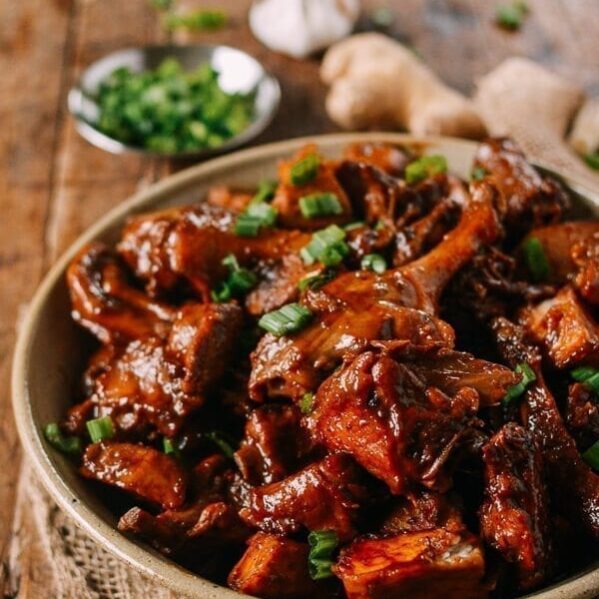
Ingredients
- a 4 to 5 pound duck
- 1 1/2 pounds large taro (680g)
- 1/2 cup oil
- 1 small piece of rock sugar (approx. 3/4 inch long, about 1/2 oz.)
- 5 slices ginger
- 8 cloves garlic (smashed)
- 3 scallions (white and green parts separated)
- 1/4 cup Shaoxing wine
- 1 tablespoon oyster sauce
- 3 tablespoons light soy sauce
- 2 tablespoons dark soy sauce
- 2 cups water
Instructions
- If you’re using a frozen duck, defrost and soak the duck in water for 30 minutes to get rid of any blood and gaminess. Clean the duck thoroughly inside and out. Drain and pat the duck dry with paper towel. Cut the duck into 1” x 2” pieces, and remember to trim away the ducktail. Set aside.
- Prepare the taro by peeling the outer skin. Rinse and pat the taro dry, and cut into ½ inch thick large pieces. Add the oil to a wok over medium heat, and shallow fry the taro chunks until the edges on all sides JUST start to turn brown (you’ll need to flip them once). You can do this in two batches. Turn off the heat, scoop them out and set them aside.
- Spoon out the oil from the wok, leaving about 2 tablespoons behind. Melt the rock sugar in the oil over low heat. Add the ginger, garlic, and scallion whites, and let it cook for 1-2 minutes. Turn the heat up to medium high and immediately add the duck pieces, spreading them out in a single layer. Cook the duck for about 2 minutes on each side and add the Shaoxing wine, oyster sauce, light soy sauce (and the fermented bean curd sauce if you decide to use it), dark soy sauce, and water. Stir everything well, cover, and cook for 20 minutes using medium heat, stirring once in between to prevent sticking.
- Now add the taro pieces, mix, cover and cook for another 5 - 7 minutes using medium heat, stirring once in between to prevent sticking. Add a bit more water if it looks dry. The dish is done once the taro is cooked through. Try not to over-stir or overcook, because the taro will break up. Dish out and garnish with the chopped green parts of the scallions.
